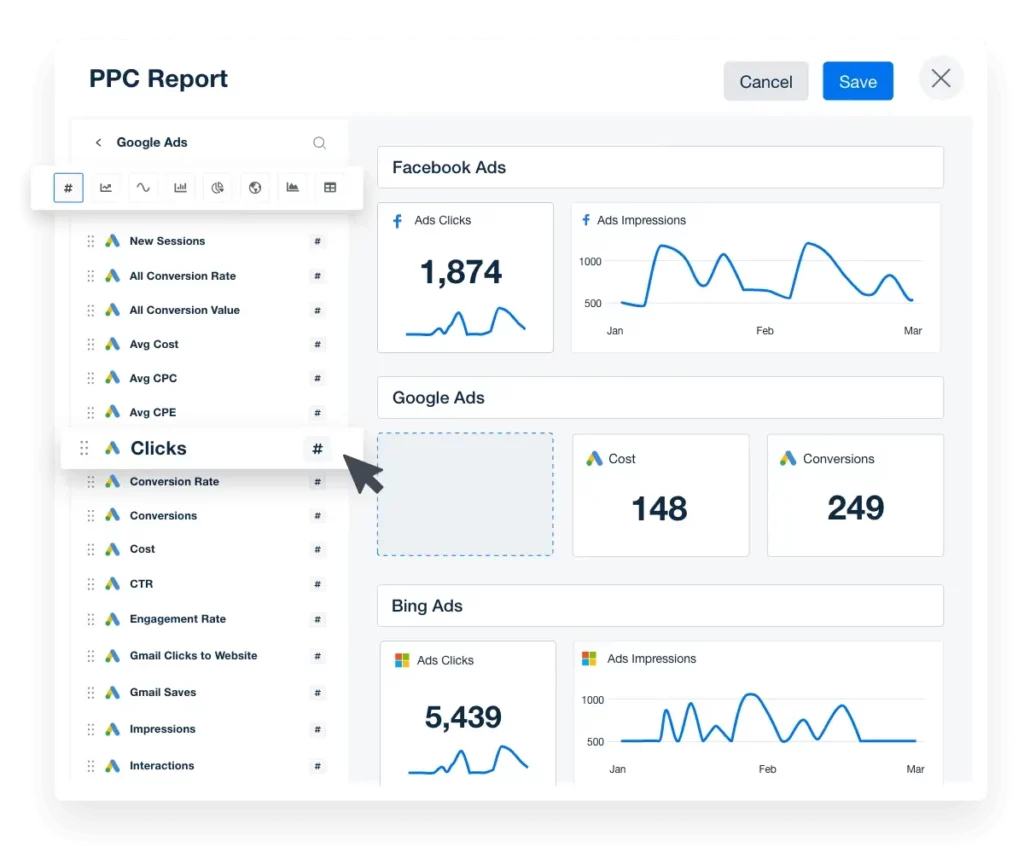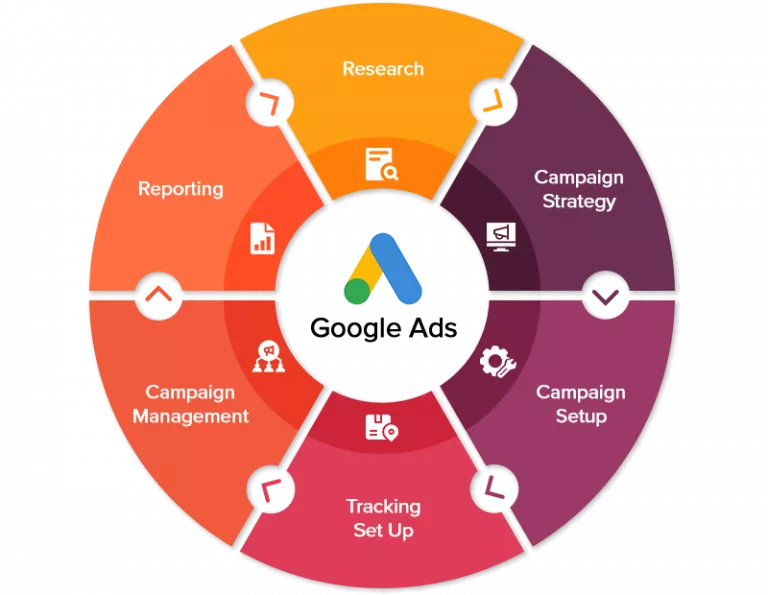How to manage Google Ads for clients

The most fundamental step in running a campaign on Google is setting up your ads. However, managing your Google ads is just as crucial to ensuring campaign success. When providing advertising services to clients, tracking performance, analyzing data, optimizing content, and adjusting budgets all play a decisive role in improving efficiency and conversion rates. In the following article, RentAds will guide you through a structured and how to manage google ads for clients.
Overview of managing Google advertising for clients

Google advertising plays a crucial role in modern marketing strategies. To better understand how it works and the benefits of proper management, let’s start with the definition, all will be explained in detail below.
What is Google Ads management for clients?
Google Ads management for clients is a service provided by experts or agencies to handle the entire Google Ads campaign on behalf of a business. From market research, goal setting, and campaign setup to performance tracking and budget optimization, every step is carried out to help clients achieve the best possible business outcomes. This service helps businesses save time and effort while minimizing risks caused by a lack of digital advertising expertise.
Take advantage of hiring a Google Ads manager
Not all businesses have an in-house marketing team with expertise in Google Ads. Hiring advertising specialists allows businesses to leverage hands-on experience, optimization skills, and deep data analysis capabilities. As a result, ad campaigns are executed more effectively, stay on the right track, generate high conversions, and significantly reduce costs. In addition, experts can help identify issues early, enabling businesses to quickly adjust strategies in line with market trends.
Google Ads management is for which types of businesses?
Google Ads management services are commonly trusted and used by small and medium-sized businesses, retail stores, startups, service companies, and individual online sellers. In addition, large brands also frequently outsource or partner with agencies to run large-scale campaigns that are complex and require constant updates in line with Google’s algorithms. Depending on their budget and objectives, each client needs a tailored advertising strategy and a highly skilled partner to execute it effectively.
How to manage google ads for clients

Adhering to a professional process and proper campaign management ensures budget optimization, improved performance, and alignment with business objectives.
Set up a clear and logical campaign structure
The structure of a Google Ads account should be organized by individual clients or specific projects, with campaigns categorized based on clear objectives—such as Search, Display, Video, or Performance Max. This approach makes it easier to manage, monitor, and report on the performance of each component. According to Semrush and PPC experts, properly structuring campaigns helps reduce wasted ad spend and enhances the ability to manage and improve performance effectively.
Accurate keyword research
Identifying priority keyword groups is a crucial step. You should use Keyword Planner and tools like Ahrefs or SEMrush to discover high-search-volume keywords that clearly reflect user search intent. At the same time, build a list of negative keywords to filter out irrelevant traffic. This strategy not only improves targeting accuracy but also helps optimize CPC costs.
Create engaging content and leverage A/B testing
Campaigns should include multiple ad variations (with diverse headlines, descriptions, and extensions) so that Google can test and identify the most effective version. A/B testing different ad copies, visuals, and calls to action helps you determine which message delivers the highest CTR and best user engagement.
Smart targeting and budget setup
Experts recommend using audience signals (remarketing, custom intent, and Customer Match) in combination with a cautious expansion strategy like Conservative Audience Expansion. At the same time, implementing Smart Bidding strategies such as Maximize Conversions or Target ROAS allows for automatic optimization of cost and conversion value. Budgets should be clearly defined, controlled on a daily basis, and aligned with each client’s specific objectives.
Track conversions and analyze with tools
Conversion tracking is the foundation of optimization. You need to set up conversion tracking in Google Ads and link it with Google Analytics 4 (GA4) or Firebase to measure user behavior, from clicks and form submissions to phone calls and in-app actions. This data enables you to fine-tune your keywords, ad content, and budget to better align with your ROI goals.
Optimize continuously and apply automation
Today, Google Ads places a strong emphasis on automation. For professional campaign management, it’s recommended to use Performance Max campaigns to leverage AI in delivering ads across multiple networks such as Search, Display, Video, Gmail based on user behavior signals. However, it’s still important to control negative keywords, monitor ad relevance, and avoid excessive expansion settings to maintain campaign control.
Notes on how to manage google ads for clients
Even if a client has set up a well-structured Google Ads campaign with a clear strategy, its effectiveness still depends on several smaller factors outlined below.
Track and assess performance daily
Monitoring the performance of your ad campaign on a daily basis is a key factor in ensuring optimal efficiency. Metrics such as CTR (Click-Through Rate), CPA (Cost Per Action), and conversion rate reflect how effectively your ads are reaching and convincing users to take action. When a metric begins to decline or shows unusual fluctuations, early detection allows you to make timely adjustments—such as updating ad creatives, reallocating budget, or refining target audiences. A closely monitored campaign always has a better chance of achieving strong results and avoiding unnecessary budget loss.
Use frequency capping
Một sai lầm phổ biến trong quảng cáo là để cùng một người dùng nhìn thấy mẫu quảng cáo quá nhiều lần trong thời gian ngắn, gây cảm giác khó chịu, làm giảm thiện cảm với thương hiệu và lãng phí ngân sách. Để khắc phục điều này, bạn nên thiết lập giới hạn tần suất hiển thị (frequency cap) trong chiến dịch. Tính năng này cho phép bạn kiểm soát số lần quảng cáo được hiển thị với mỗi người trong một khoảng thời gian nhất định. Bằng cách áp dụng giới hạn tần suất hợp lý, bạn sẽ duy trì được sự xuất hiện hiệu quả mà không gây phản cảm, đồng thời tối ưu hóa chi phí phân phối quảng cáo.
Optimize for mobile devices
In an era where over 70% of internet traffic comes from mobile devices, optimizing ads for mobile is no longer optional, it’s essential. You need to ensure that your ad layout, landing page loading speed, and user experience all perform smoothly on smaller screens. Additionally, your ad creatives should feature clear images, concise text, and prominent call-to-action buttons that are easy to tap. When your ads are well-optimized for mobile, you increase the chances of reaching your target customers at critical moments, especially during instant search and shopping behaviors.
Use supporting tools
In the process of managing ads, you should not overlook the power of analytical and research tools. Platforms like Ahrefs, SEMrush, Google Keyword Planner, and SimilarWeb provide a wealth of data on keywords, competitors, search trends, and content gaps that you can leverage. By combining Google Ads with in-depth keyword research, you’ll gain deeper insights into the market, understand what your customers are searching for, and adjust your advertising strategy more precisely. Additionally, these tools help you monitor performance over time and identify new opportunities before your competitors do.
Contact Info
We provide services google account for rent nationwide, and with a team of experienced and qualified staff who both support advertising and can directly perform Facebook advertising if you need. Contact us via phone number.
Frequently Asked Questions
In 2025, Google has upgraded its AI-powered features such as automated ads, goal-based bidding, and cross-channel reporting. Advertisers need to stay up to date with AI Mode and AI-based ad placements, overviews on Google Search, ads appearing within AI features like Gemini, and the use of first-party data tools, audience signals, and privacy-compliant practices. However, transparency remains a limitation, as many campaigns—such as Performance Max—still operate like a “black box.”
Yes. Each client should have their own Google Ads account to ensure data is kept separate, transparent, and easy to manage. You can then link that account to a Google Ads Manager Account (MCC) for centralized management. This approach helps minimize risks related to security, access permissions, and billing.